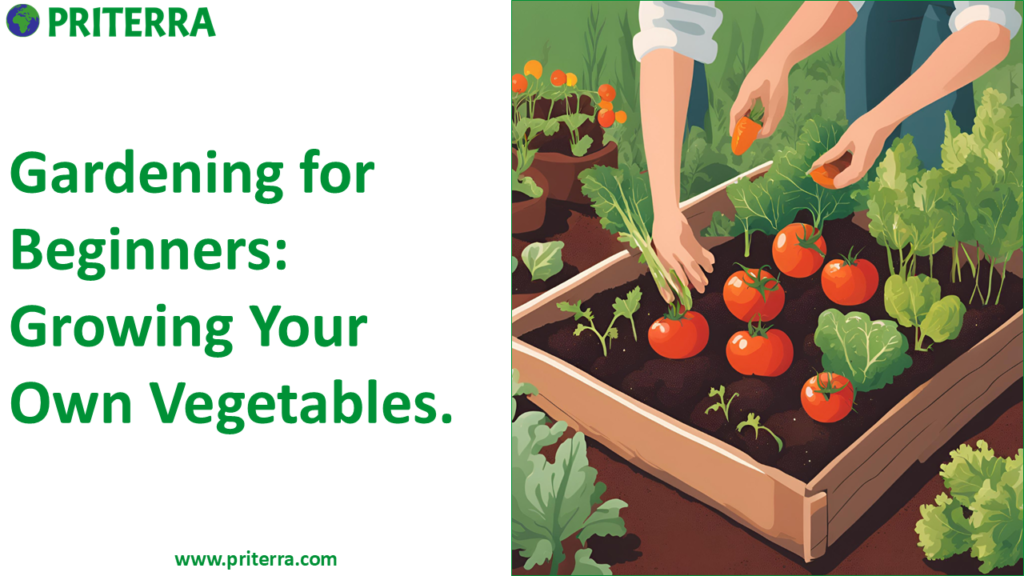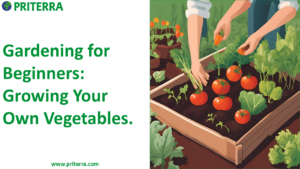Gardening is a great way to embrace sustainability, enjoy fresh produce, and connect with nature. Here is a simple guide for beginners on how to grow their own vegetables:
Step 1: Choose the Right Location
Choose a spot that receives at least 6-8 hours of sunlight daily. Most vegetables need full sun to thrive. Ensure the location has good drainage to prevent waterlogging.
Step 2: Prepare the Soil
Healthy soil is the backbone of any successful garden. Trench or spade the soil to at least 12 inches deep and incorporate compost or organic materials into the soil to enhance structure and fertility. Test the soil pH, if possible, and make changes in conformance with the types of vegetables you intend to grow.
Step 3: Choose Your Vegetables
Begin with some of the easier-to-grow vegetables, such as:
- Tomatoes- Full sun and warm climates will do well with these in pots or small gardens.
- Spinach- Grows well through the year in most Indian climatic conditions.
- Okra (Bhindi)- A tropical crop. It’s easy to grow and easy to care for.
- Coriander (Dhaniya)- Quick growing herb and used a lot in Indian cooking.
- Chillies- Perfect for balconies and pots, and very important for adding zing to foods.
Step 4: Sow Seeds or Set Out Seedlings
Obey the planting guidelines on seed packets or labels if seedlings. Plant seeds to the depth suggested and space at the recommended gap. If seeding with seedlings, dig a hole slightly wider than the seedling’s root ball and then place the seedling in and cover the root with soil.
Step 5: Watering
Water your garden frequently, but do not make the soil waterlogged. Water your garden early in the morning so that there will be less evaporation. Also, do not wet the leaves to avoid disease.
Step 6: Mulching
Add a layer of mulch around your plants. Mulch helps retain moisture in the soil, suppresses weeds, and promotes healthy soil. Straw, grass clippings, or shredded leaves can be used as mulch.
Step 7: Fertilizing
Organic manures such as compost tea, fish emulsion, or well-rotted manure, feed your vegetables, and follow the recommended dosage and frequency for the type of vegetable.
Step 8: Pest and Disease Management
Check for pests and diseases in your plants. Manage pest problems using natural remedies such as neem oil, insecticidal soap, or companion planting. Remove the diseased plant immediately to control the spread of infections.
Step 9: Harvesting
Harvest your vegetables at the time of their full size and color. Frequent harvesting stimulates the continued production. Use your fresh products or preserve them by canning or freezing.
Step 10: Continuous Learning
Gardening is the process of continuous learning. Experiment with different types of vegetables, techniques, and garden layouts. Join gardening communities or follow blogs for tips and inspiration.
Starting a vegetable garden is not only rewarding but also a step towards a more sustainable lifestyle. Happy gardening!


